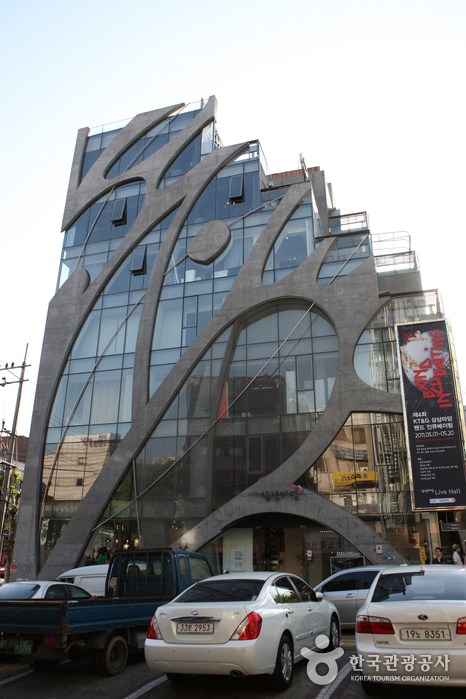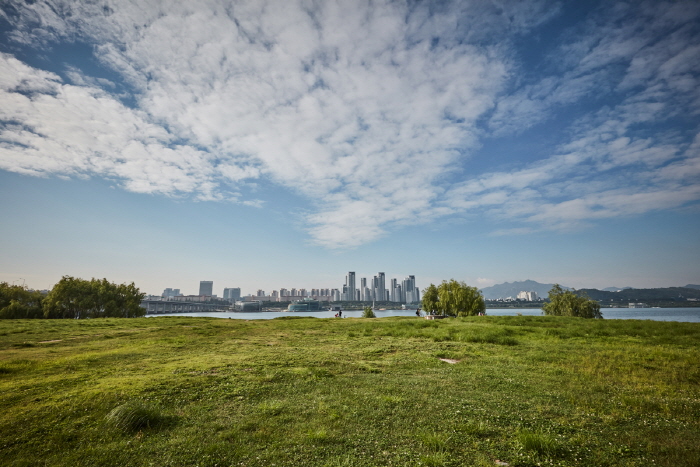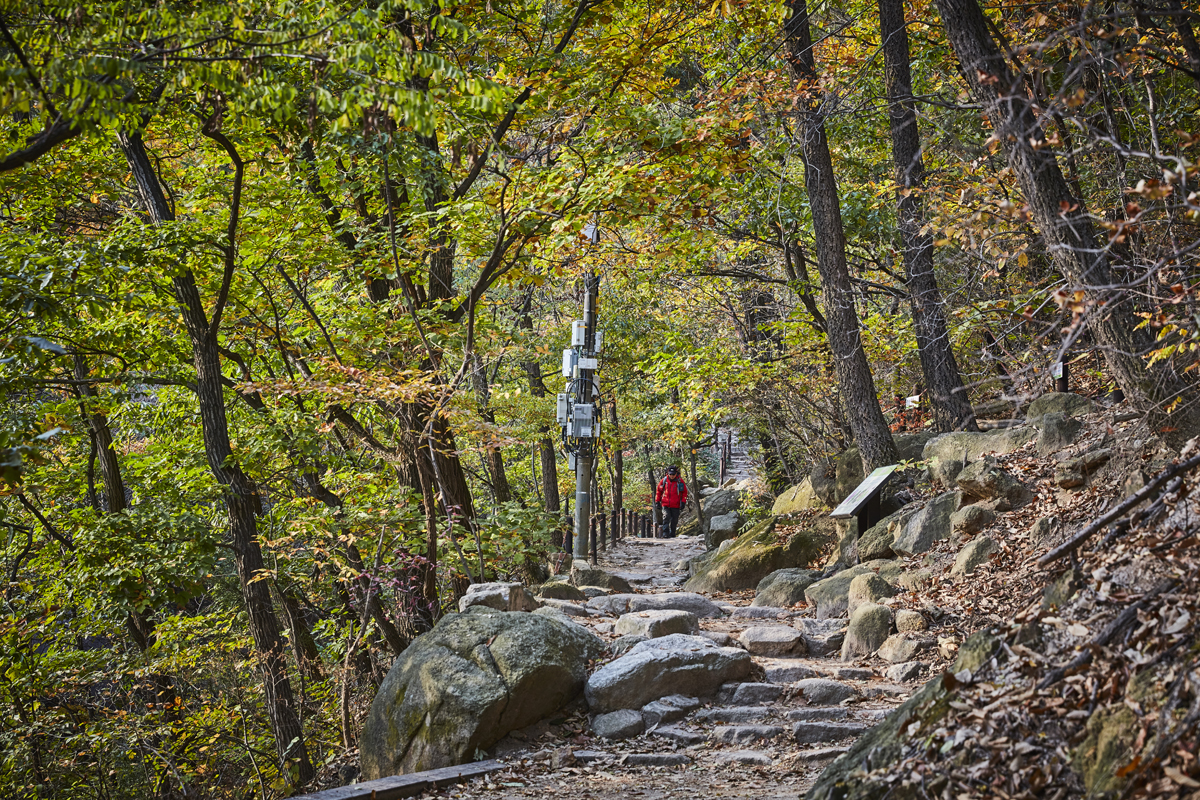Hongdae Chamsinhan Pharmacy [Tax Refund Shop] (홍대참신한약국)
5.8Km 2024-04-23
1F, 62, Eoulmadang-ro, Mapo-gu, Seoul
-
Romi Story - Hongdae Branch [Tax Refund Shop] (로미스토리 홍대점)
5.8Km 2024-04-18
23, Wausan-ro 17-gil, Mapo-gu, Seoul
-
Sangsangmadang - Hongdae Branch [Tax Refund Shop] (상상마당 홍대)
5.8Km 2024-04-22
65, Eoulmadang-ro, Mapo-gu, Seoul
-
Angyeong Gongjang Gongjangjang Contact Lens [Tax Refund Shop] (안경공장공장장콘택트)
5.8Km 2024-04-22
83, Dongmak-ro, Mapo-gu, Seoul
-
KT&G Sangsangmadang Arts Space (Hongik University) (KT&G 상상마당(홍대))
5.8Km 2024-03-12
65 Eoulmadang-ro, Mapo-gu, Seoul
+82-2-330-6227
KT&G Sangsangmadang Arts Space is a multifaceted cultural space established in 2007. Spanning 660 meters with a total floor area of 3,366 meters, it features facilities such as a theater, a concert hall, a design square, a gallery, and cafés. It offers opportunities for close engagement with culture. Located near Hongik University Station, it boasts excellent accessibility and attracts many visitors due to its diverse attractions.
Ichon Hangang Park (이촌한강공원)
5.8Km 2025-10-23
62 Ichon-ro 72-gil, Yongsan-gu, Seoul
+82-2-3780-0551
Ichon Hangang Park is built along the Hangang Park in Yongsan. From the park, one can see the Hangang River up close, and one can also find sports facilities like soccer fields, jokgu fields, inline skating rink, water sports facilities, bicycle paths, as well as a nature learning center built around a restored wetland and a lawn. One can follow the Hangangdaegyo Bridge to enter into the Nodeulseom Island, an island in the middle of the river.
◎ Travel information to meet Hallyu’s charm - TV series "Sisyphus: The Myth"
This park was featured in the TV series "Sisyphus: The Myth" as the setting where Seo Hae (played by Park Shin-hye) reflected on bittersweet memories with her father. Its expansive grounds make it an ideal spot for leisure activities such as walking, picnicking, and cultural events.
Tutorial (튜토리얼)
5.8Km 2025-10-30
39-15, Wausan-ro, Mapo-gu, Seoul
Singer Zion.T
The tutorial run by singer Zion.T and his father gives a comfortable first impression with white interior and spacious seats. The signature menu, 'Crumpled Paper Cake', is topped with non-smooth white icing and, as the name suggests, looks like crumpled paper. Chocolate sauce is provided here, so customers can write their own pictures or letters. Even if you're not good at it, you can make your own cake, so it's really fun. His dog ‘Haemeogi’ resting in the store as if indifferent is another specialty.
Lotte Mart - Cheongnyangni Branch [Tax Refund Shop] (롯데마트 청량리점)
5.9Km 2024-04-22
210, Wangsan-ro, Dongdaemun-gu, Seoul
-
Jinjungsung Optical - Hongdae Branch [Tax Refund Shop] (안경진정성홍대점)
5.9Km 2024-06-27
13-5, Dokmak-ro 15-gil, Mapo-gu, Seoul
-
Bukhansan National Park (Seoul District) (북한산국립공원(서울))
5.9Km 2024-11-27
262 Bogungmun-ro, Seongbuk-gu, Seoul
+82-2-909-0497
Bukhansan Mountain was officially designated as a national park in 1983. Bukhansan National Park covers both Bukhansan and Dobongsan Mountains, and spans a total area of 80.699 ㎢. At the top of Bukhansan Mountain are Baegundae Terrace (835.6 m), Insubong Peak (810.5 m) and Mangyeongdae Terrace (799.5 m), which gave the mountain the nickname "Samgaksan" or the "three-horned mountain." The mountain had other names: Sambongsan (mountain with three peaks), Hwasan (flower mountain), and Buaak (mountain shaped like a person giving a baby a piggyback ride). The current name, Bukhansan, was given after the Bukhansanseong Fortress was built under King Sukjong of the Joseon dynasty.
![Hongdae Chamsinhan Pharmacy [Tax Refund Shop] (홍대참신한약국)](http://tong.visitkorea.or.kr/cms/resource/53/2890653_image2_1.jpg)
![Romi Story - Hongdae Branch [Tax Refund Shop] (로미스토리 홍대점)](http://tong.visitkorea.or.kr/cms/resource/57/2890557_image2_1.jpg)
![Sangsangmadang - Hongdae Branch [Tax Refund Shop] (상상마당 홍대)](http://tong.visitkorea.or.kr/cms/resource/97/2887997_image2_1.jpg)
![Angyeong Gongjang Gongjangjang Contact Lens [Tax Refund Shop] (안경공장공장장콘택트)](http://tong.visitkorea.or.kr/cms/resource/46/2891246_image2_1.jpg)




![Jinjungsung Optical - Hongdae Branch [Tax Refund Shop] (안경진정성홍대점)](http://tong.visitkorea.or.kr/cms/resource/67/3314167_image2_1.jpg)

 English
English
 한국어
한국어 日本語
日本語 中文(简体)
中文(简体) Deutsch
Deutsch Français
Français Español
Español Русский
Русский